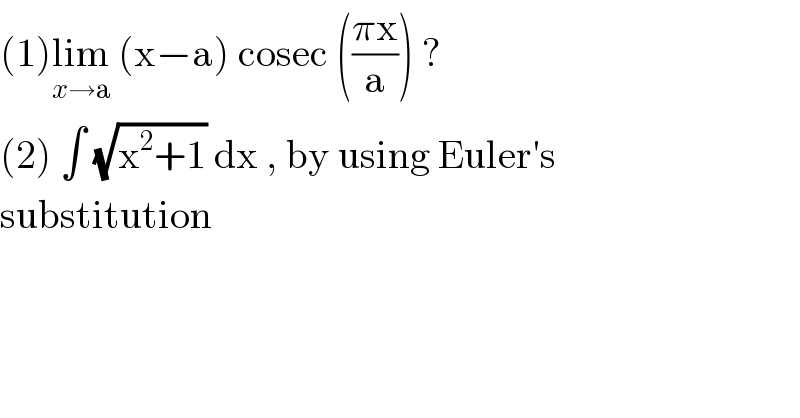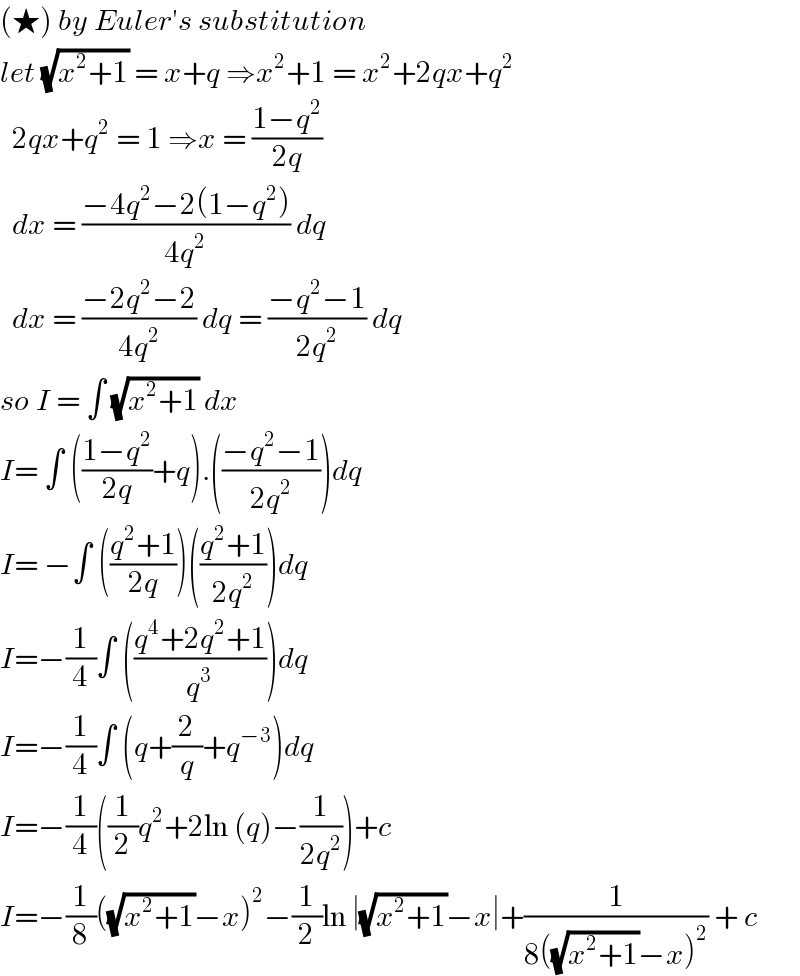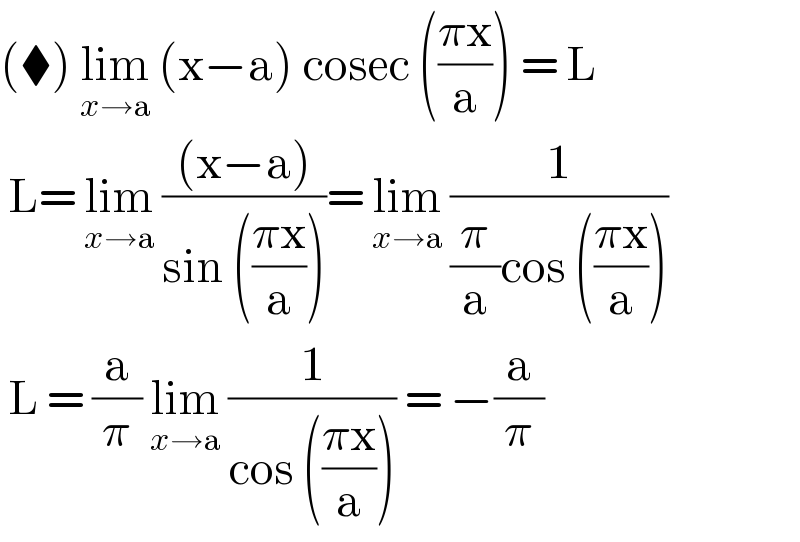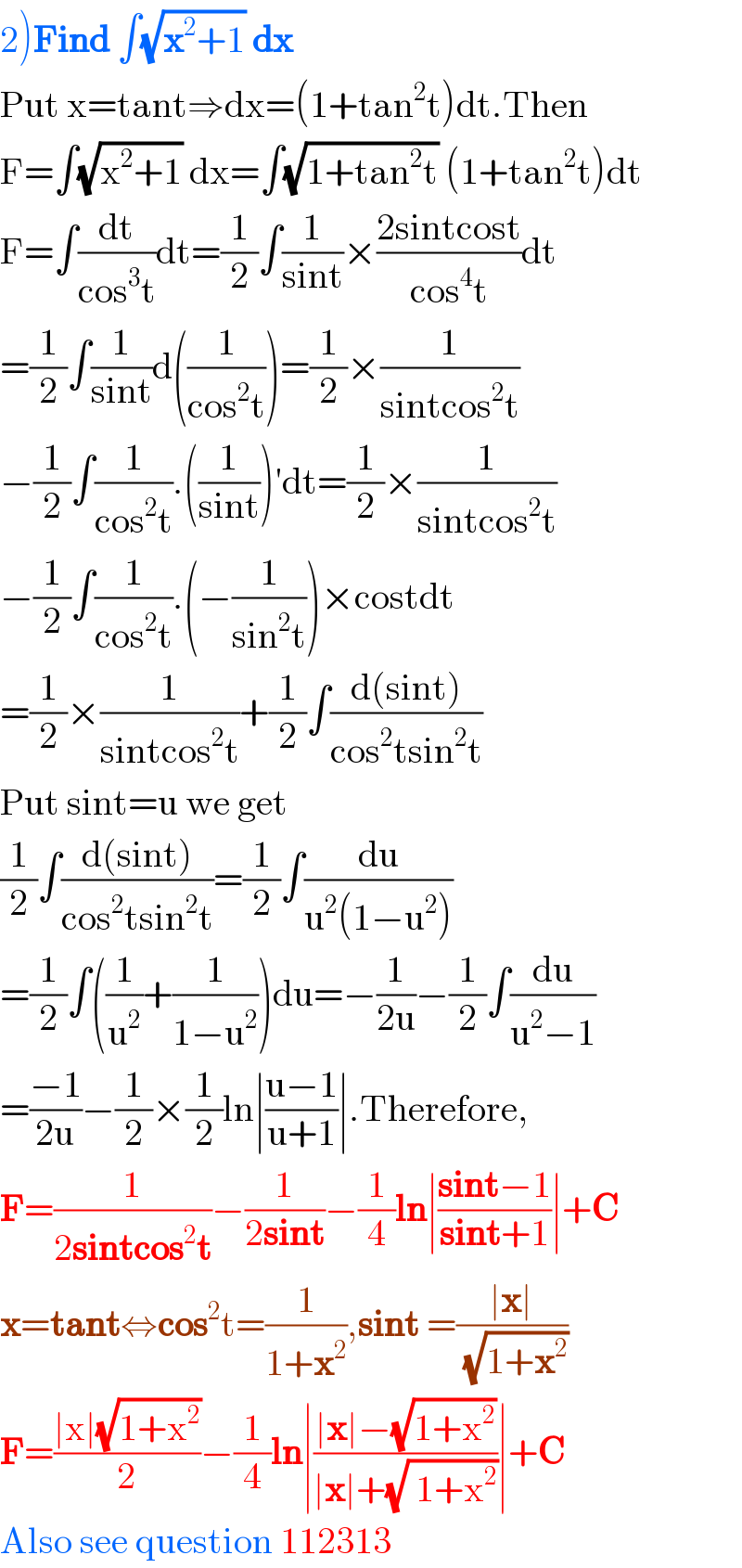
Question and Answers Forum
Question Number 112651 by bemath last updated on 09/Sep/20

Answered by john santu last updated on 09/Sep/20

Answered by bobhans last updated on 09/Sep/20

Answered by 1549442205PVT last updated on 10/Sep/20

| ||
Question and Answers Forum | ||
Question Number 112651 by bemath last updated on 09/Sep/20 | ||
 | ||
Answered by john santu last updated on 09/Sep/20 | ||
 | ||
| ||
Answered by bobhans last updated on 09/Sep/20 | ||
 | ||
| ||
Answered by 1549442205PVT last updated on 10/Sep/20 | ||
 | ||
| ||